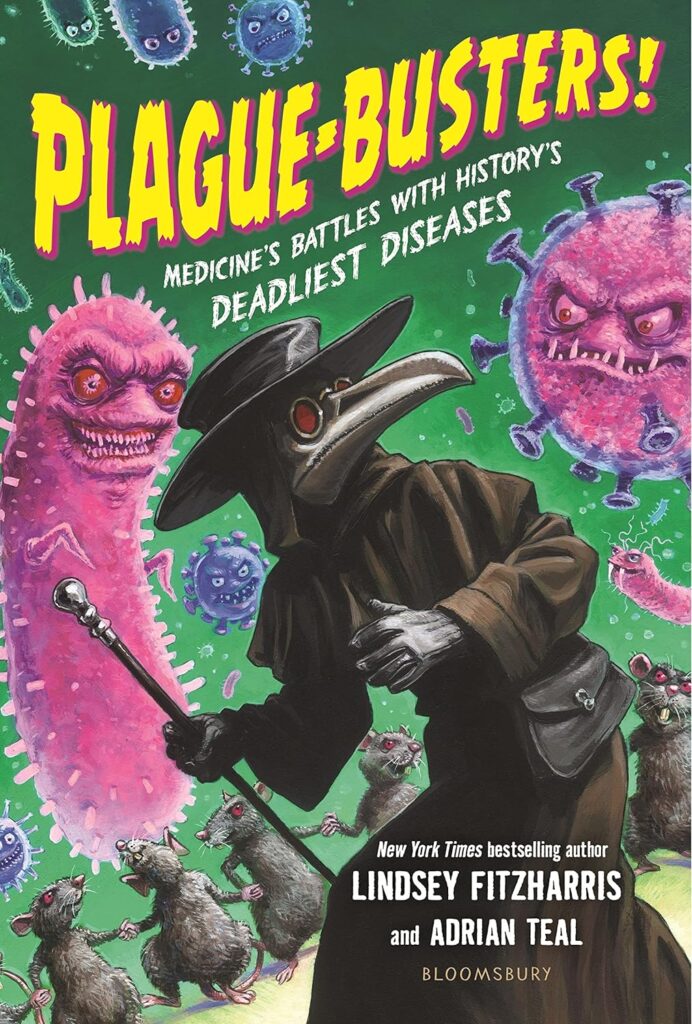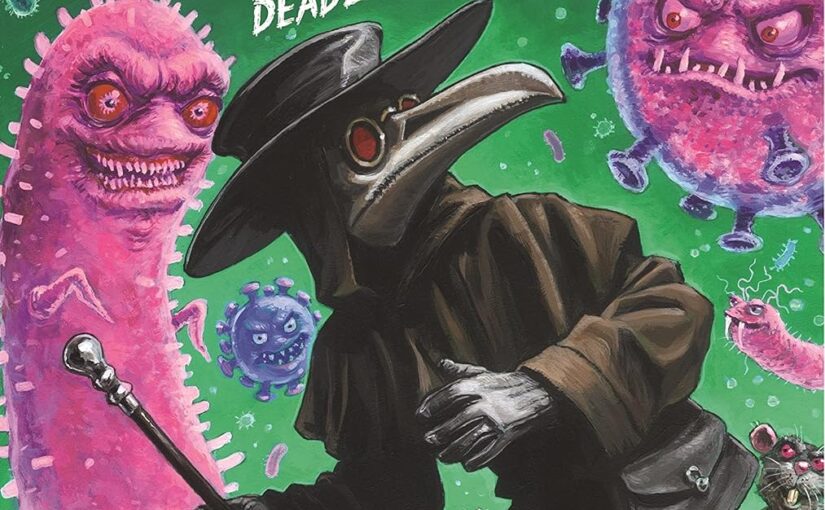There is a difference between a good book and a fun book. Good books don’t necessarily have to be fun and those fun books don’t always have to be good, in a literary or personal sense. You may read some tawdry summer beach love book about teenage vampires or romantic solo vacations to the edge of the world and they are 100% your jam, and others might not view them as good, but they sure are fun. Plague-Busters! Medicine’s Battles with History’s Deadliest Diseases is a fun book that’s laden with dozens of illustrations and snappy text that makes the world’s low points accessible, without watering down their scale.

In a way, it’s a sibling book to Sick!, a book on molecules that make us sick. However, that book was more graphic novel-esque in its presentation and has a demographic that’s slightly younger. Plague-Busters! is a chapter book, but it’s broken up so often with illustrations and different paragraphs on the same subject that it has much more of a narrative. And oh, the illustrations are so marvelous, they range the gamut from Monty Python-inspired hands reaching down from the skies, oversized semi-anthropomorphic germs, and dancing rodents to plague doctors who look like they should be playing guitar with Ghost.
Each chapter covers a specific disease in a very thorough and entertaining way. It’s set up as a choice of sorts because every disease can be known by a couple of monikers. There’s the plague, but it’s also called the black death, scurvy is the plague of the sea, cholera is the Blue Death and there are a couple of others that are highlighted. The chapter lists its scientific name, in addition to the more personal nickname that it earned due to its side effects. To that end, Plague-Busters! easily wins the prize for the book that has “bulbous” the most out of any book that we’ve ever read. And when it comes to diseases, bulbous is an especially graphic and disgusting term that audiences will come to love for all of the best STEM reasons.
As each chapter begins you’re reading a first-person, historically fictitious account of how people or groups of them dealt with the disease. For example, Cholera originated in India and arrived in North America in 1832. People weren’t too different back then and started blaming Cholera on the poor. The accusations then spread to doctors, thinking that they were infecting people with the disease intentionally. As the bowl infectious disease kept on spreading around the globe so did the outlandish possible cures for the fatal sickness. I found it amazing that Cholera still exists and infects millions of people annually.
Plague-Busters! does a great job of humanizing each plague by ending chapters by highlighting a couple of people who were killed by said disease. Addison’s disease was thought to be the killer of Jane Austen, but something that makes more sense is Tuberculosis, which also killed the 17th President of the United States, Andrew Jackson. All of the deaths are augmented with a snippet of the person’s life, relevant other health issues or something else witty that will engage readers.
In my alternative world where fifth-grade students pay attention to all STEM fields and actively participate in leisure reading about one of the topics, they love Plague-Busters!. They gossip about how some of the diseases would be researched today, share alternate theories about treatment and debate about which one would be solved the fastest with today’s modern medicine. The text and presentation in the book is OK for those ages to read and understand. However, most of those ages will probably be intimidated by the concept of the world’s deadliest diseases. It’s a very fun book to read that oozes entertainment from every bulbous swell or orifice that otherwise needs to remain shut.
Instead, I view this as a sneaky STEM Trojan horse whose goal is to demonstrate that science and history are amazingly fun. I’m not saying that any of these diseases are fun. The book is fun to read and told via the lens of a grand adventurer peering back in time as a clever narrator. It disarms the potentially complex and intimidating world of our planet’s major diseases by taking a top-level view of how humans dealt with them, as well as their symptoms. It does all of this with a sense of humor that has the power to make anyone aged eight and up believe that they can be a scientist or doctor, which is better than any superpower I can think of.
Plague-Busters! Medicine’s Battles with History’s Deadliest Diseases is by New York Times bestselling author Lindsey Fitzharris and Adrian Teal with illustrations by Adrian Teal and is available on Bloomsbury Children’s Books.
There are affiliate links in this post.





 Facebook
Facebook Twitter
Twitter Flickr
Flickr GooglePlus
GooglePlus Youtube
Youtube